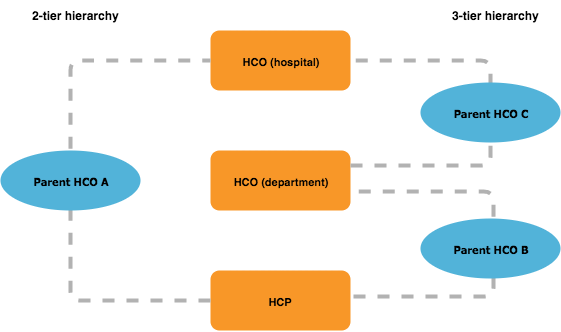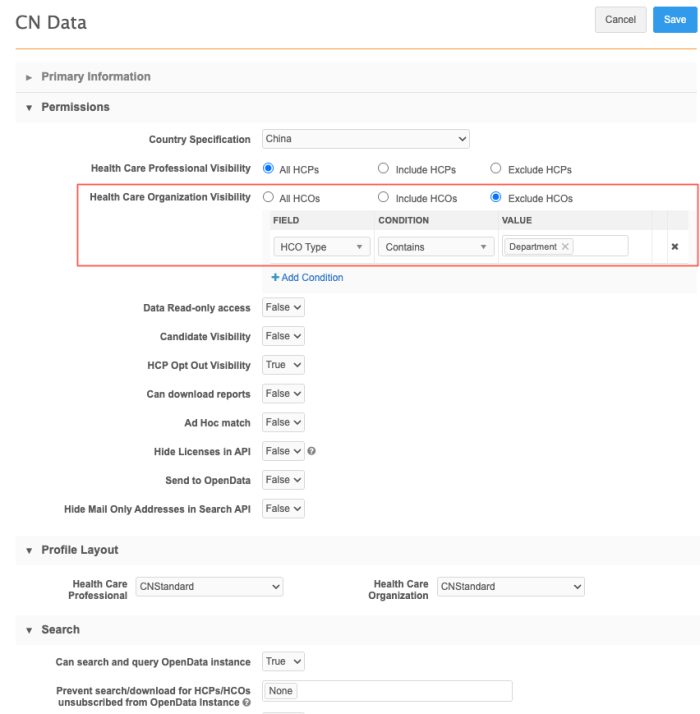2-tier and 3-tier hierarchies (China)
DM
DS
ST
Network instances in China use either a 3-tier hierarchy model or a 2-tier hierarchy model.
-
3-tier model - HCPs are affiliated to department HCOs, which in turn are affiliated to hospital HCO entities.
HCO relationships that are not considered relevant are hidden.
-
2-tier model - HCPs are directly affiliated to hospitals.
This model does not include the departmental level HCO in CRM or Network hierarchical data.
The 2/3 tier feature ensures entities will have unique primary relationships for both the 2 and 3 tier hierarchy models.
Enable a hierarchy model
To enable 2 or 3 tier hierarchy model, contact Veeva Support.
Searching for Veeva OpenData records in 2-tier and 3-tier hierarchies
When the 3-tier hierarchy model is enabled and users are searching for Chinese Veeva OpenData records, the affiliation between the HCP and HCO (hospital) is hidden from the search results. Hiding the Parent HCO affiliation between the hospital and HCP simplifies the data and aligns with the standard behavior of 3-tier hierarchies.
This applies only to Chinese data when the Search and Query OpenData option is enabled (Settings > General Settings).
Hierarchy models

- 2-tier hierarchy - HCPs are directly affiliated (Parent HCO A) to hospitals. This model does not include the departmental level HCO in Veeva CRM or Network hierarchical data with a Veeva OpenData Subscription and data visibility profile filters on the HCO type Department.
-
3-tier hierarchy - HCPs are affiliated (Parent HCO B) to department HCOs, and department HCOs are affiliated (Parent HCO C) to hospital HCO entities. The affiliation (Parent HCO A) between an HCP and the hospital HCO is hidden.
2-tier hierarchy
To ensure that 2-tier customers do not see the department HCO, the HCO type must be filtered from the data visibility profile for users who can search Veeva OpenData for records.
In the data visibility profile for China, exclude HCO Types that are Departments.
